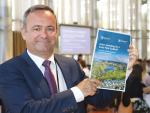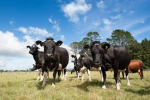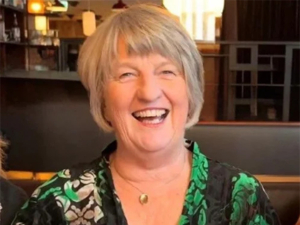Dairy farmers could end up paying more for the Mycoplasma bovis eradication effort if they do not endorse DairyNZ’s proposed levy.
It also keeps them “a seat at the table” to have a say in managing the continuing response.
Those were the key messages of a series of consultation meetings held NZ-wide where farmers were asked to endorse a levy of up to 3.9c/kgMS under the Government Industry Agreement for Biosecurity Readiness and Response (GIA).
Otherwise, MPI would implement a levy under the Biosecurity Act, rather than the GIA – and the amount and payback period would be at its discretion, farmers have been warned.
“That’s certainly what we’ve been advised by the Government,” DairyNZ chief executive Dr Tim Mackle said following a meeting at Darfield last month.
“The general feeling of those who turn up -- for most afterwards -- is that they now better understand the issue and they understand what’s being asked. It’s not about whether or not you want to pay it, it’s how you want to go about doing it.”
The consultation period ended on February 28. Farmers have been asked to vote either in hardcopy or online – with the results to be collated on March 8. DairyNZ expects to confirm its approach with MPI on March 29 and the levy could be operative by June 1.
Asked if the farmers’ vote would be binding, Mackle said it would be, “in the sense that if the minister’s satisfied there’s enough support, then yes,” he explained.
“However, we’re 100% owned by farmers so if farmers aren’t happy with how this is going, then we need to change it.”
Some farmers remained unhappy with the 94%-6% split decided between dairy and beef, but Mackle said there was a review clause built into the operational agreement which could see it change.
DairyNZ board member Colin Glass told the meeting that a biosecurity levy was already in place under the GIA, which DairyNZ signed up to last year. It was currently set at a maximum of 0.26c/kgMS – appropriate to a “small scale foot and mouth incursion” – but had not yet been incurred.
The GIA also gave the dairy sector a seat at the table with Government to manage the response, Glass said.
“The key point is that without GIA industry has no involvement and no governance role at all in handling biosecurity incursions and the Government can levy whatever it likes.”
Glass said the DairyNZ board wasn’t happy with the dairy/beef split, but it was justifiable because of the disease’s economic impact on the dairy sector.



















